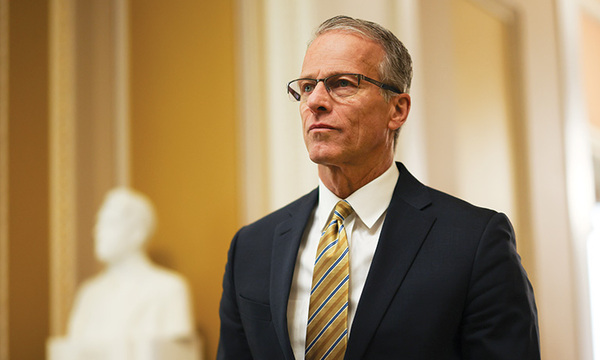Many Christians are concerned about lawsuits that seek to remove Judeo-Christian symbolism from the public sphere, such as Ten Commandments displays in courthouses, crosses at war memorials, and the national motto — “In God We Trust” — on U.S. currency.
These court cases certainly raise legitimate issues. Many Christians, however, are unaware of a 16-year-old Supreme Court ruling that poses a far greater threat to religious liberty.
Employment Division v. Smith
In 1990, the Supreme Court ruled, in Employment Division v. Smith, that members of the Native American Church don’t have a constitutional right to use Peyote, a hallucinogenic drug, as part of their religious ceremonies if the law prohibits Peyote use generally.
This ruling may not seem like a significant threat to religious liberty since most religious groups don’t encourage drug use. Moreover, in 1994 Congress passed a federal law protecting the right of members of the Native American Church to use Peyote. However, the Smith ruling established a precedent that could ultimately curb the religious practices of all religious groups.
This precedent pertains to what is known as the “free exercise clause.” The First Amendment of the U.S. Constitution contains two clauses that guarantee freedom of religion: the “establishment clause” and the “free exercise clause.” The establishment clause prohibits the government from establishing an official religion while enforcing a separation between church and state. This is the clause invoked by those who wish to remove Judeo-Christian references from the public sphere. The free exercise clause, on the other hand, guarantees the right of religious groups to operate without government interference.
Although establishment clause cases raise important issues, they don’t prevent a church or faith community from following its own religious practices in its own domain. Those practices are protected by the free exercise clause, which was at issue in the Smith case.
Before Smith, the Supreme Court held that the government couldn’t prevent a religious practice — even if the practice violates a generally applicable law — unless it had a “compelling interest.” An example of when the government has a compelling interest is when it has required Jehovah’s Witnesses to give blood transfusions to their children to protect the children’s health and lives, even though their religion prohibits blood transfusions. But, in the absence of a compelling interest, religious groups were exempted from generally applicable laws. For example, the Amish were exempted from a state law requiring them to give up their home-based education in favor of formal schooling until age 16.
The Impending Threat
Smith, however, paved the way for generally applicable laws to be enforced against a religious community even when harm to the community from enforcement would outweigh the government’s interest. For example, a legislature could now require churches to comply with employment laws that prohibit discrimination on the basis of religion, gender and sexual orientation — without regard to the impact on churches’ ability to practice their religious beliefs.
Of course, legislatures can choose to make exceptions for religious groups. That’s why, as it stands now, most religious organizations are exempt from employment discrimination laws. But, under Smith, such exemptions are no longer constitutionally required under the First Amendment.
Consequently, the new rule shifted the power to protect religious freedom, in large measure, from the judicial to the legislative branch of government. And, while democratically elected legislatures are generally effective in protecting the rights of the majority, they have a mixed record when it comes to protecting the rights of the minority. Historically, courts have done a better job of that.
The question then becomes: What happens when the legislatures have majorities that are hostile to religion and decide not to accommodate religious practice under generally applicable laws? For example, what could a legislature require of an evangelical community like Biola? Might a legislature dictate who is (or who is not) hired? Who is admitted to the student body? What is taught in the classroom?
In response to such concerns about Smith, the U.S. Congress enacted the Religious Freedom Restoration Act (RFRA) in 1993, which restored the pre-Smith protection for religious liberty. While the Supreme Court has held that Congress exceeded its authority in enacting RFRA as it applied to states, the Court recently upheld RFRA as it applies to the federal government. Several states also have passed similar statutes.
Although these federal and state RFRAs do currently protect religious groups from generally applicable laws that burden them today, the shift of power to ensure religious liberty from the judicial branch to the legislative branch may pose a threat to religious freedom in the future.
 Biola University
Biola University


